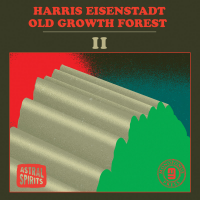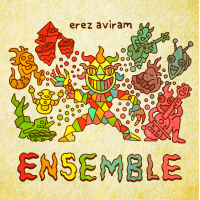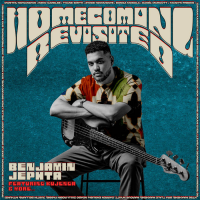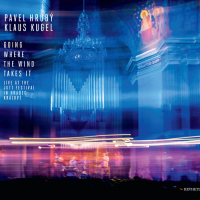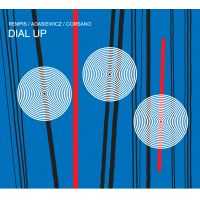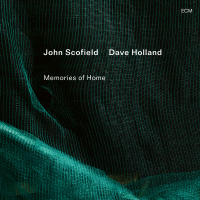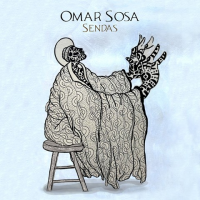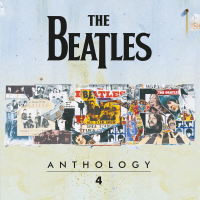Home » Jazz Articles » Album Review » Horace Tapscott: The Dark Tree
Horace Tapscott: The Dark Tree
Of course, to describe Tapscott as "forgotten" is only true of mainstream jazz history. His albums are treasured by connoisseurs, who have supported several limited-edition reissues of The Dark Tree. Originally released on two separate discs, The Dark Tree: 1 and The Dark Tree: 2 on Hat Hut subsidiary hat ART in 1990 and 1991, it was repackaged as The Dark Tree 1 & 2 on another subsidiary, hatOLOGY, in 1999. That double disc was reissued on hatOLOGY in 2009 as The Dark Tree—the release which is here being reviewed (celebrated may be a better word).
Recorded live at the Catalina Bar & Grill in Hollywood, California, over four nights in December 1989, substantial portions of The Dark Tree revisit Tapscott's own-name debut album, The Giant Is Awakened, released in 1969 on ex-Impulse producer Bob Thiele's Flying Dutchman label. On The Dark Tree, the title track is heard in two performances, each around twenty minutes long, and "Nyja's Theme" gets another twenty minute workout. Those two tunes were included on the 1969 album, on which "Nyja's Theme" was titled "Niger's Theme."
Both these albums were recorded by a quartet, with clarinetist John Carter replacing alto saxophonist Arthur Blythe on The Dark Tree, on which the bassist and drummer are the twin-giant team of Cecil McBee and Andrew Cyrille. (The Flying Dutchman group was billed as a quintet, rather cheekily, as the second bassist was not present on every track).
The music on The Dark Tree is a seething cauldron of emotion rooted, as per Tapscott's signature, in bass and drums rhythms and his own, deep left-hand. The overall effect is shamanistic, a quality enhanced by Carter's ferocious, smeared-note outbursts of energy. There are nuances, shifting dynamics and strong melodies all along the way. Thirty years on, the album remains a stone delight.
The combined playing time of the two discs is a satisfying two hours-plus. Given that the album was recorded over four nights, it is likely that several more hours of similarly (or nearly as) transcendent music were also recorded. If someone does put out a 2019 anniversary edition, and the location tapes can still be located, perhaps some of the previously unreleased material could be included.
There is an unusual confluence of dates ending with the number 9 in this review. So here, for good measure, is one more. The aforementioned Arthur Blythe, an alumnus of Tapscott's The Pan Afrikan Peoples Arkestra, recorded his magum opus, Lenox Avenue Breakdown (CBS), in 1979. That album has not been reissued since the mid 1990s. It, too, is crying out for a 2019 anniversary edition.
Post Script: Numerologists will have noted the significance of the dates referred to above. An auspicious 6 of them end with the number 9. There is 1969, 1979, 1989, 1999, 2009 and 2019. That is 6 decades all ending in 9—all the way down. Invert the number 6 and you get 9. Flip 999 and you get 666 the number of you know who. Now it gets deep. Multiply 6 by 9 and you get 54. And 5 plus 4 makes 9. Divide 54 by 6 and you get, guess what, 9. You couldn't make it up. There are 9 tracks on the Horace Tapscott album. Can you dig it? Next reverse the original decade order so you start with 2019 and end with 1969. That's right, you still get 6 decades all ending in 9. Now get a mirror, a pen and some paper and damn, this peyote is good shit.
Track Listing
CD1: The Dark Tree; Sketches Of Drunken Mary; Lino's Pad; One For Lately. CD2: Sandy And Niles; Bavarian Mist; The Dark Tree 2; A Dress For Renee; Nyja's Theme.
Personnel
Horace Tapscott
pianoHorace Tapscott: piano; John Carter: clarinet; Cecil McBee: bass; Andrew Cyrille: drums.
Album information
Title: The Dark Tree | Year Released: 2009 | Record Label: Hat Hut Records
Tags
PREVIOUS / NEXT
Support All About Jazz
 All About Jazz has been a pillar of jazz since 1995, championing it as an art form and, more importantly, supporting the musicians who make it. Our enduring commitment has made "AAJ" one of the most culturally important websites of its kind, read by hundreds of thousands of fans, musicians and industry figures every month.
All About Jazz has been a pillar of jazz since 1995, championing it as an art form and, more importantly, supporting the musicians who make it. Our enduring commitment has made "AAJ" one of the most culturally important websites of its kind, read by hundreds of thousands of fans, musicians and industry figures every month.





